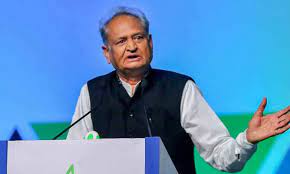Rajasthan Govt. announces 19 New Districts, 3 New Divisions in State

Rajasthan Govt. announces 19 New Districts, 3 New Divisions in State: Rajasthan Government recently approved a proposal to form 19 new districts and three new divisions with the purpose of improving governance and decentralizing administrative functions. Rajasthan now has 50 districts and 10 divisions, up from 33 districts and 7 divisions previously.
Daily Current Affairs Quiz: August 2023
Background
A high-level committee chaired by retired IAS officer Ram Lubhaya formed in March 2022 to give recommendations about the formation of new districts in Rajasthan. The committee delivered its findings, and on the basis of the interim report, Chief Minister Ashok Gehlot announced the establishment of 19 new districts in the state on March 17.
After the announcement of the formation of the new states, representations were received from people, public representatives and various organizations regarding the demarcation of the new district boundaries. The representations were forwarded to the committee for re-examining the boundaries of the proposed districts. After reviewing the submissions, the committee submitted its report to the state administration on August 2nd, which was accepted at the Cabinet meeting on Friday.
Reorganization of Existing States
As part of the reorganization part, the existing Jaipur will be divided into Jaipur and Jaipur Rural and the existing Jodhpur into Jodhpur and Jodhpur Rural.The move aims to streamline governance and enhance service delivery at the local level.
New Districts and Divisions
Apoongarh, Balotra, Beawar, Deeg, Didwana-Kuchaman, Dudu, Gangapur City, Kotputli-Behror, Khairthal-Tijara, Neem Ka Thana, Phalodi, Slumber, Sanchore, and Shahpura are among the new districts.The state will now have 10 divisions with the addition of Banswara, Pali and Sikar.
Significance
The formation of new districts is expected to decentralize power and governance, making it more accessible to the people at the grassroots level. Smaller administrative units can lead to better service delivery, improved law and order and enhanced governance. The move is also expected to provide relief to citizens who previously had to travel long distances to access government offices and services.